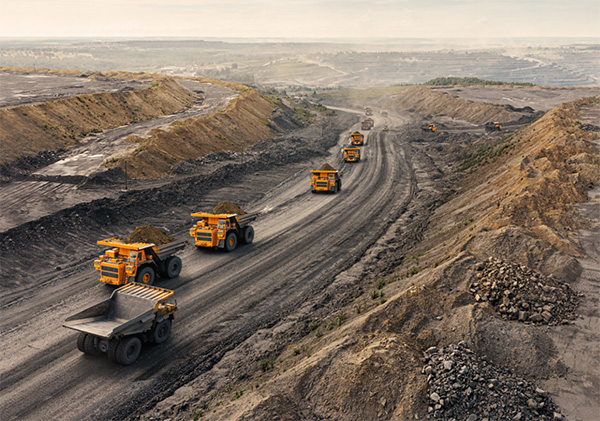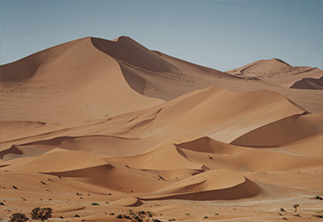Green Mineral Profile
DRC
Overview
Overview
The African copper belt, stretching from Zambia to the Democratic Republic of Congo (DRC), is a crucial global source of copper. The DRC stands out for its rich mineral wealth, boasting over fifty identified ores. Among these, copper and cobalt are key exports, with the DRC dominating the global cobalt market, supplying two-thirds of the world's demand. Most of the world’s terrestrial cobalt resources are in sediment-hosted stratiform copper deposits in the DRC. The country's mineral reserves include silver, uranium, gold, and rare metals like coltan.
Gécamines, the DRC's largest state-owned company, leads in cobalt and copper production. Through the Sicomines agreement, it has partnered with Chinese firms in joint-venture agreement.

Key green minerals
- The Democratic Republic of Congo (DRC) dominates the global cobalt market. It has cobalt reserves amounting to 4 million tons, 48% of the world total.
- The DRC accounted for 72% of global cobalt production in 2021, with a total production of 119,000 tons.
- While cobalt is the major critical mineral in the DRC, the country also produces noteworthy amounts of copper. The DRC was the fourth largest producer of copper in 2021, behind Chile, Peru, and China. The DRC accounted for 8% of global production in 2021 and holds 3% of global copper reserves.
reserves
(4,000,000 tons)
production
(119,000 tons)
reserves
(30,000 tons)
production
(1,800 tons)

Major mining
projects
Metalkol mine is a surface mine situated in Katanga. Owned by Eurasian Resources Group, the mine produced an estimated 55,908 tons of cobalt in 2021.
Tenke Fungurume, located in the Katanga province of the DRC, is one of the largest high-grade copper-cobalt deposits in the world. In production since 2009, the mine is owned and operated by Tenke Fungurume Mining. China Molybdenum, the world’s second largest cobalt producer, currently holds a controlling 80% ownership in the mine with Gecamines, DRC’s state-owned mining firm, holding the remaining 20%. It produced an estimated 18,501 tons of cobalt in 2021.
Sicomines mine is surface mine located in Katanga. The mine is owned by China Railway Group and produced an estimated 17,154 tons of cobalt in 2021.
Mashamba East mine is a surface mine situated in Katanga. The mine is owned by Glencore Plc and the mine produce an estimated 17,775 tons of cobalt in 2021.
KOV mine is a surface mine situated in Katanga. The mine is owned by Glencore Plc and the mine produced an estimated 16,491 tons of cobalt in 2021.
Katanga mine is an open-pit copper-cobalt project located in the Lualaba province of the DRC. Katanga mine is owned and operated through two joint ventures named Kamoto Copper Company and DRC Copper and Cobalt Project. Glencore owns 86.3% of Katanga Mining Limited, which holds 75% stake in Kamoto Copper Company. State-owned mining companies La Generale des Carrieres et des Mines and La Societe Immobiliere du Congo hold the remaining the 25% stake in the Kamoto Copper Company.
Kamoa-Kakula is projected to be the world’s highest-grade major copper mine and is a joint venture between Ivanhoe Mines (39.6%), Zijn Mining Group (39.6%), Crystal River Global Limited (0.8%) and the Government of the DRC (20%).
Manono mine is located north of Lubumbashi in the south of the DRC. The project is owned by AVZ (75%) and La Congolaise d’Exploitation Miniere SA (Cominiere, a state-owned enterprise) (25%).
Processing capacity and value addition
Processing capacity and value addition
Cobalt production is primarily a by-product of large copper mines. In the DRC, companies mainly produce cobalt hydroxide from copper-cobalt concentrate to reduce transportation weight. Notably, the Kamoa Copper Project plans to build an in-house smelter with a capacity of 300,000 tons per year of blister copper. There is a significant potential for value addition in the copper-cobalt ore processing, suggesting the need for further investment to optimize the value chain locally.
Regarding lithium, the Manono-Kitolo Mining Project has the potential to become one of the world's largest lithium operations. However, its development has been halted by legal disputes.
The United Nations Economic Commission for Africa (UNECA) has identified several opportunities for the development of regional value chains that cut across central Africa into east and southern Africa for battery-minerals and electric-vehicles. Zambia and the Democratic Republic of Congo (DRC) have signed a cooperation agreement to facilitate the development of value chain in electric battery and clean energy sector.

More countries to explore
Thank you for your message!
Your message has been sent. Our aim is to get back to you within a few business days. If you have any questions, please feel free to contact us on AMDC@africa-union.org.
Exception occurred
Feedback
Please use this form to send feedback on this page (see our privacy policy and cookie policy). Please note that we may take a few days or weeks to respond.





